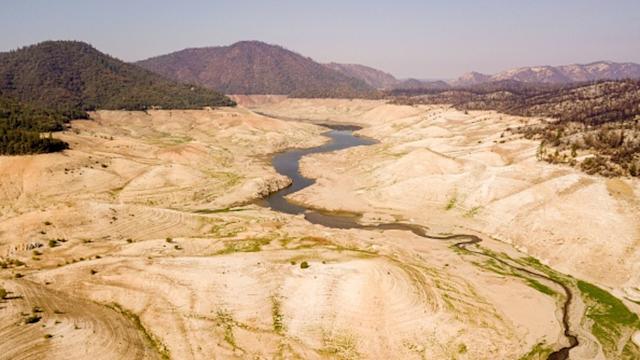America experienced its hottest summer on record in 2021, with higher temperatures than the country experienced during the infamous 1936 ‘dust bowl.’
From June 1 to September 1 – the meteorological summer – the average temperatures across the contiguous US were 74.0 degrees Fahrenheit, according to the NOAA report released Friday.
That is 2.6 degrees higher than average, and beats the hottest summer on record in 1936 by .01 of a degree.
The report noted a number of extreme weather events from this summer, as well as temperature records broken across the country.
The states of California, Idaho, Nevada, Oregon and Utah, or 18.4 percent of the contiguous US, all experienced their hottest summers on record, while 16 other states had summers that ranked in the top five warmest on record.
Overall, the summer of 2021 on the mainland US was 2.6 degrees above average.
Year-to-date temperatures were warmer as well, with California and Maine each reporting their third warmest January through August on record.
In late June, temperatures in Portland hit a record-breaking 116 degrees and Seattle saw an unprecedented 108 degrees, according to Accuweather.
Canada also experienced record temperatures, with 121 degrees recorded in Lytton, British Columbia, resulting in a wildfire that engulfed 90 percent of the village days later.
Droughts too have become severe, with roughly 46.6 percent of the contiguous US experiencing drought as of August 31, and had expanded throughout the summer, according to researchers, resulting in record-setting wildfires.
The Lake Oroville reservoir, for example is currently at 23 percent of its capacity.
The ongoing Dixie Fire is currently California’s second largest wildfire on record, meanwhile the Caldor fire, also in California, has dangerously impacted air quality in parts of the state.
While extreme weather has wreaked havoc across the US this year, the Dust Bowl summer of 1936 brought a unique set of conditions including drought, dust storms and insect infestations.
The brutal conditions caused and exodus from Oklahoma and Texas, where dusty conditions had become unbearable, to California.
The dust storms had were so bad that from the Midwest to the eastern seaboard, trains would sometime miss their stops due to the blinding conditions, and roofs could collapse under the weight of the dust.
